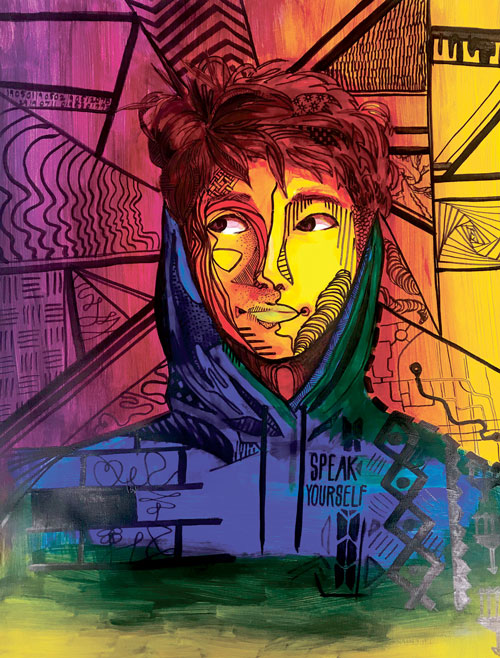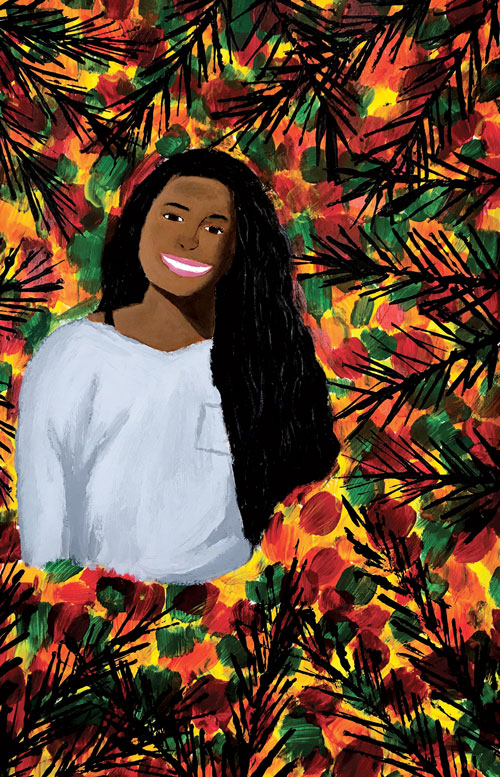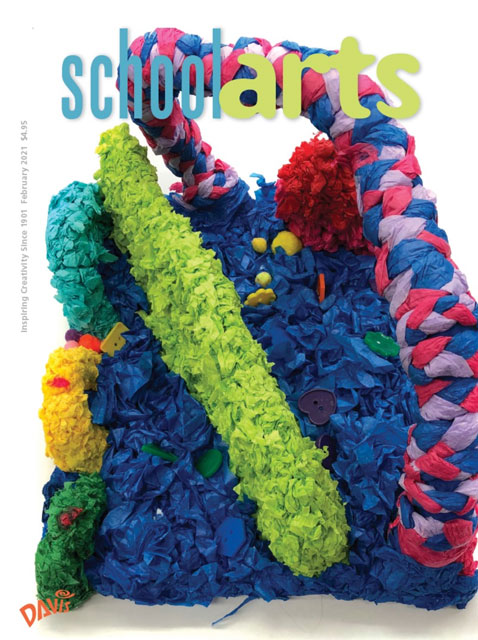 |
| Jannely M., grade ten. |
During parent-teacher conferences, some parents would stop by to meet me, and they beamed with pride as they exclaimed their student would be studying medicine or law at the collegiate level. I’d offer my congratulations, but those interactions kept me up at night. Why were my art courses secondary to now infamous STEM curricula? Is art class just a reprieve from the college-prep course load?
Taking Action
As a result, I began research through a graduate program and made significant changes to my curriculum. I implemented resources from choicebased art education and witnessed progress. Enrollment for my class grew as students were given more artistic responsibility in the execution of their work. However, I was still unable to justify to students and their parents the importance of what we actually accomplished during art class.
Dark Horse
After additional research, I found my justification in the book Dark Horse: Achieving Success Through the Pursuit of Fulfillment (HarperOne, 2018), where authors Todd Rose and Ogi Ogas explain the possibility of individuals achieving both success and fulfillment. The authors highlight abundant successes by professionals in a variety of career fields. While tracing the origin story of each dark horse, we learn that these individuals abandoned predetermined, standardized career paths for options that would bring personal fulfillment.
This might seem like a simple concept, but through the lens of education, it firmly contradicts the promise we make to our students. Through rubrics, and the assignment of arbitrary grades and standardized tests, we lead impressionable teens to believe that if they take all the required classes, get good grades, and do well on their college entrance exams, bliss will find them after they’ve been accepted into their first-choice college.
In fact, many students declare undecided as an intended major, and the average human changes jobs five to seven times throughout their career. Essentially, we’re teaching our students to jump through hoops to graduate, then wish them luck as they leave for college, inevitably destined for a midlife crisis.
Creating Opportunities for Students
Through the even narrower lens of art education, art teachers are given the unique responsibility to address this contradiction by providing lectures about foundational skills and art history, and to push beyond these building blocks and create projects and scenarios where students can process their position in the world. We need to create opportunities for students to fail and try new solutions to problems without the fear of academic repercussions.
 |
| Regina J., grade nine. |
We can support students as they explore avenues that bring them passion and fulfillment. We must cement the foundations of our art curriculum to afford students the opportunity to explore the issues they care about, and more importantly, to discover why they care.
Rose and Ogas remind us that education is one of the last institutions that operates through standardization. They note that schools were not designed to help us find personal fulfillment and continue to operate on the principle of maximizing efficiency. Art curriculum is education’s dark horse.
Final Thoughts
My advice to parents who pay tuition and the administrators who answer to board members, is to incorporate choice into the curriculum so that students can confidently leave our institution with a roadmap to meaningful and rewarding futures. Giving students responsibility over their education can be the path to guide our educational system out of the outdated notions of standardization and to a place where we prepare students to be participants of society who have found success and fulfillment.
Kelly Pack-Scott is an art teacher at St. Theresa’s Academy in Kansas City, Missouri. kelly.pack.scott@gmail.com
View this article in the digital edition.




